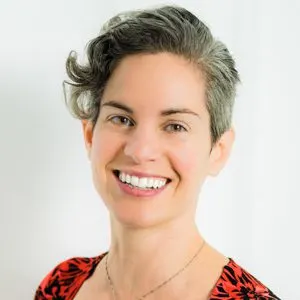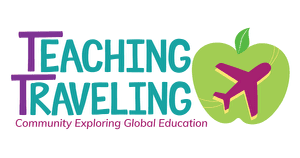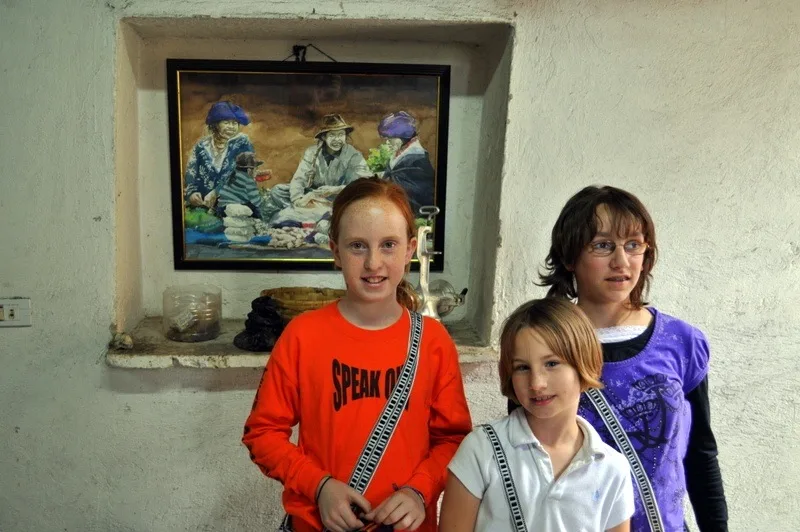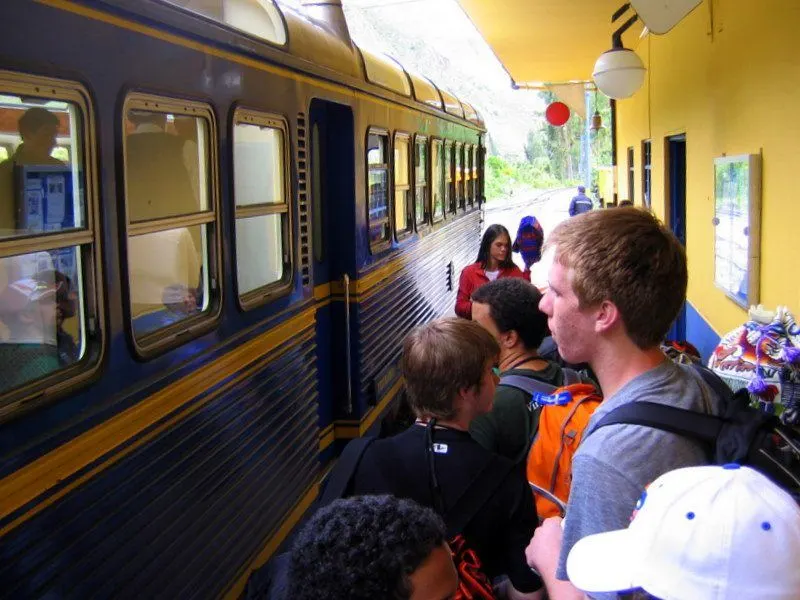An inspiring story of a stay at home mom who decided to change her career to focus on global education!
TeachingTraveling.com: Welcome, Jacquie! Tell us about yourself.
Jacquie: I grew up with an English mother and American father. I started school in England at age 4, moved to US age 5 or 6 and grew up in a small town in southern Ohio.
My first trip abroad without my family was to Russia with the Girl Scouts at age 17. It was during the cold war in 1973. After that, I went to college off and on for 10 years, while traveling whenever I could.
I would go to my grandmother’s in Frinton-on-Sea, England with my bike and use her home as a base while I visited the mainland Europe. I traveled with a boyfriend by bike all over Spain one summer. Another time, I traveled alone from England to France, where I met other cyclists at the youth hostel.
On one occasion we rode to Lille, France to enjoy the Tour de France race. A girlfriend and I went to Italy with bikes in the mid-80’s and met Italian men on the national cycling team at the airport.
We were charmed by their assistance with putting our bikes together, then they helped us find storage for our bike boxes before dropping us at our campground. I exchanged addresses with one of the cyclists & we wrote letters to each other all winter (his in Italian, so I had to get them translated).
I learned to speak Italian, then at his invitation, I went to Sicily alone over the summer, to meet him and his team in the town of Milazzo. (I could write a book about that experience alone, but will not bore you with details here!) I worked for American Youth Hostels – San Diego Council in the 80’s while going to college part-time.
I was an avid cyclist, so bicycling was a big part of my life. AYH sent me to Europe one summer to lead a couple bicycle tours. I met my husband (an American from Virginia Beach) who was leading tours for AYH’s National Office.
Our paths crossed for one day when our groups stayed at the youth hostel in Oxford, England. We exchanged addresses and moved on. I ended that summer with a last trip to Sicily where I went to visit a local woman who I had met on my previous trips. She and I had met on the beach and became friends.
She invited me to her home for meals and we stayed in touch for many years. My racing friend happened to be in town, but our relationship had fizzled and we kind of waved goodbye to each other. I knew it was over.
Back in college at San Diego State University, I was a full-time student, when the local AYH office had sudden need for a manager for their youth hostel. I had exchanged a letter or two with the American I met in Oxford and contacted him to let him know about the job.
Three days later he was in SD working as the manager of the hostel. We have been together ever since. I graduated from SDSU two years later with a degree in Cultural Anthropology and then went to work for Outward Bound.
Then we had our first child. Outward Bound offered me a job in Denver, so we moved, then 9 months later, decided to move to Virginia Beach, to be closer to family. (Having children will do that to you — not to mention sometimes make you crave a Momcation!)
My international travel came to a screeching halt, but my domestic travels picked up. Mostly a stay-at-home mom during the early years, I busied myself with local jobs at the health food store & the environmental store.
Then at 43 I had another baby! Stay-at-home mom for a couple more years, then I started helping out at my son’s school: a private, Quaker school with lots of opportunity for community involvement. I coached girls’ basketball, went on field trips and finally was hired to be the full-time Admissions Director.
My son was in high school and my daughter was in pre-school. As the Admissions Director, I had contact with all the students including the international and foreign exchange students.
I enjoyed working with them and had many occasion to help solve some of their problems. One thing that was missing from our school was travel for our students, so I asked the Head of School if I could set up a trip abroad for high school students. He said, “sure.”
I was scouting around and on the look-out for trips. I had never been to South America, and one day I got an unsolicited email from an organization offering travel with service projects to Peru. I started the process of vetting out the company and eventually set up a two-week trip the following year.
7 students and 1 other teacher accompanied me to Lima. One of the students was my son. We arrived in Cusco and were met at the airport by Vidal Jaquehua, a licensed guide who was hired by the company to be our escort. I had no idea what we were getting in to, but trusted that things would work out perfectly. And they did.
That trip was featured in a full page story in the local paper and subsequently I set up another trip with a group of women to hike the Inca Trail. Vidal organized all our logistics and took us to Lake Titicaca before we hiked the Inca Trail to Machu Picchu. We spent one day on a service project in an urban indigenous school in Cusco. We were treated like celebrities and felt humbled by the songs and stories shared by the students in our honor.
TT: What an amazing series of journeys! Please explain a bit more how you set up this South America travel opportunity.
J: I’m a good networker. When I met our guide in Cusco on the first trip, I stayed in touch and brought other groups. Then I helped him get a visa and come to the US as my guest and to attend the Adventure Travel Expo in DC. About 1 1/2 years ago he asked me to be his business partner.
I set up a corporation and banking and he and I have been business partners since. It’s an interesting arrangement and communication is a challenge sometimes, but we both share common work ethic and values, so we have made it work for us. The name of our company is Adios Adventure Travel.
TT: Fabulous! So, how did you find the money to fund this travel?
J: This is by far the biggest obstacle to travel, especially for students. I am working on ways to set up fundraising opportunities for students in my region by contacting local business leaders and organizations.
I have applied and encouraged some of my students to apply to travel abroad programs that are fully funded. Yes, it’s important to apply for grants. I have only had time to apply for one so far and did not get it, but you have to keep applying before something comes through.
One of my trips was nearly free because I contacted tour providers and told them I wanted to come down and check out their services. They offered hotels and meals gratis. I just had to pay for my flights. I was able to use frequent flyer miles. I did have some expenses, but I am allowed deductions because both my jobs are related to travel.
TT: Tell us one moment from your travels that was particularly powerful.
J: Anything can happen on your trips and on the first trip to South America, we spent one week on our service project in northern Peru. Fewer than 1% of tourists go to northern Peru. My son was not feeling well when we departed Cusco to fly to Cajamarca. We had been there a week and had all gotten to know our guide Vidal. So when he told me my son DID NOT have altitude sickness, I believed him.
We arrived in Cajamarca and my son’s condition was slowly deteriorating. He went from feeling lethargic to having a fever. The guides and directors in Cajamarca were wonderful and arranged for 2 English nurses, from the local clinic to examine him at the hotel. Their diagnosis was altitude sickness and the thought was he would recover soon. So it was decided to continue the trip by local bus to a remote village of Chota.
We rode all day up over 15,000 foot passes on dirt roads. No signs, no guard rails or evidence of the modern world was visible. The bus had to back up to get around the corners on several mountain switchbacks. At one point the dirt road was washed out by a small river dancing down the side of the mountain.
The bus driver plunged headfirst in to the river, causing me to see my life passing before my eyes. (I’m sure I let out an audible gasp!) We arrived in Chota and our wonderful hosts met us with small 4-wheel drive vehicles to transport us over the 12 km dirt roads to the lodge where we would stay during our service project.
Another vehicle took my son and I to the local hospital. This scene could not have been better if written by a Hollywood screenwriter. (Again it’s worth a chapter on it’s own, so I won’t go in to detail here.)
A couple of days later we were able to transport my son over the 12 km dirt roads to the lodge where the rest of the group was working on the project. The recipients of our services were local subsistence farmers who were getting brick stoves installed in their mud-brick homes.
Because I was the “Queen Bee,” I was given the only chair to sit in, padded with a wool blanket for comfort. I helped tote and carry the bricks and screened the rocks to mix concrete and at the end, I was handed a long rusty nail, with which to inscribe my name into the wet mortar on the top of the family’s new stove. I wondered how I would feel if a contractor wanted to inscribe his initials into an appliance in my kitchen? Rather than make a fuss, I did it.
TT: Intense! How have your travels impacted you in your Global Education career?
J: This is perhaps another book! My job has evolved into full time Director of International Programs. I have expanded the trips program and last June was able to offer a trip to Ecuador for 4th & 5th grade students (each accompanied by an adult). It was one of my favorite trips.
It’s important to challenge students to think about their attitudes and learn how to distill the bombardment of information down into workable units that will help them understand the world we live in. Educational travel can help students see what is meaningful in life.
As students become more comfortable interacting with citizens of foreign cultures, they will make better leaders and make better decisions not only for themselves, but for all people. As teachers, it’s important to bring the lessons home. How can students who have traveled like this come home and influence their peers and their communities in meaningful ways?
It’s important for teachers to partner with students to encourage them to think out of the box after they return. While our academic institutions focus more and more on scholastic accomplishment, the capacity to express compassion can get lost in our busy lives.
For a teacher, being in the presence of students as their empathy unfurls, is the greatest reward and justification for educational travel experiences. It’s important for teachers to recognize this component of travel and help students understand its importance and then nurture it after they return.
In that sense, my travels have motivated me to galvanize leaders in our community to cooperate toward the common goal of providing more educational travel experiences for ANY student who demonstrates willingness to prepare to go. Community fundraising is a big part of the picture here. Although the program I started was mainly for students from my school, we have expanded the program and now offer trips for any student in the region.
TT: How have your travels impacted you as a person?
J: I walk more, I buy less, I am more conscious of the impact my personal choices have on the planet. I see more opportunities to influence other adults and I am more aware of the power that my words can have on a young person’s choices.
TT: What advice do you have for other teachers who are dreaming of travel?
J: When I wanted to plan one trip, I did not envision that it would turn in to this. My advice to others is, plan one trip. Was I scared? Yes, scared to death. What if I got off that plane in Lima on that first trip and no one was there? There will always be questions of the unknown.
Do your homework. Trust your instincts. Network, Network, Network. Locally, nationally, internationally. Then stop, evaluate, make adjustments, then plan another trip. You really have to take it one step at a time.
I work at the Virginia Beach Friends School and they have encouraged me to network with other schools, teachers and programs. Anyone who would like additional information or specific contact info in Peru, Ecuador, Galapagos or China can contact me [email protected].
TT: Thanks so much, Jacquie! What an inspiration you are.

The author, Lillie Marshall, is a 6-foot-tall National Board Certified Teacher of English from Boston who has been a public school educator since 2003. She launched TeachingTraveling.com in 2010 to share expert global education resources, and over 1.6 million readers have visited over the past decade. Lillie also runs AroundTheWorld L.com Travel and Life Blog, and DrawingsOf.com for educational art. Do stay in touch via subscribing to her monthly newsletter, and following @WorldLillie on social media!





Whitney Zahar
Sunday 7th of April 2013
Oh my goodness, Jacquie! I'm from Virginia Beach originally too! I lived close to VB Friends School. How awesome that such a program developed there! I will definitely be contacting you. I've been living abroad in Asia for a total of four years (one in South Korea and three in Taiwan) where I am a part-time English teacher, stay-at-home mom, and writer. Thank you so much for your story!
chris
Thursday 23rd of December 2010
Seems like you had a life full with adventure.